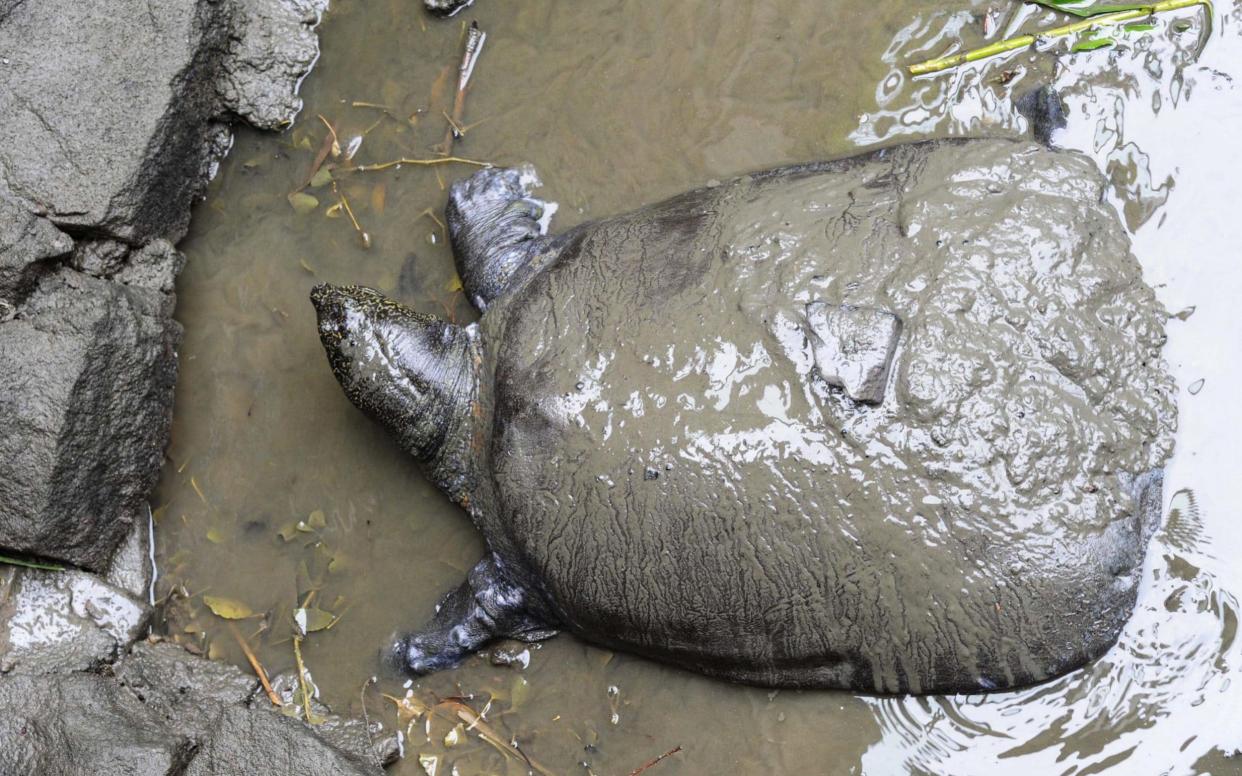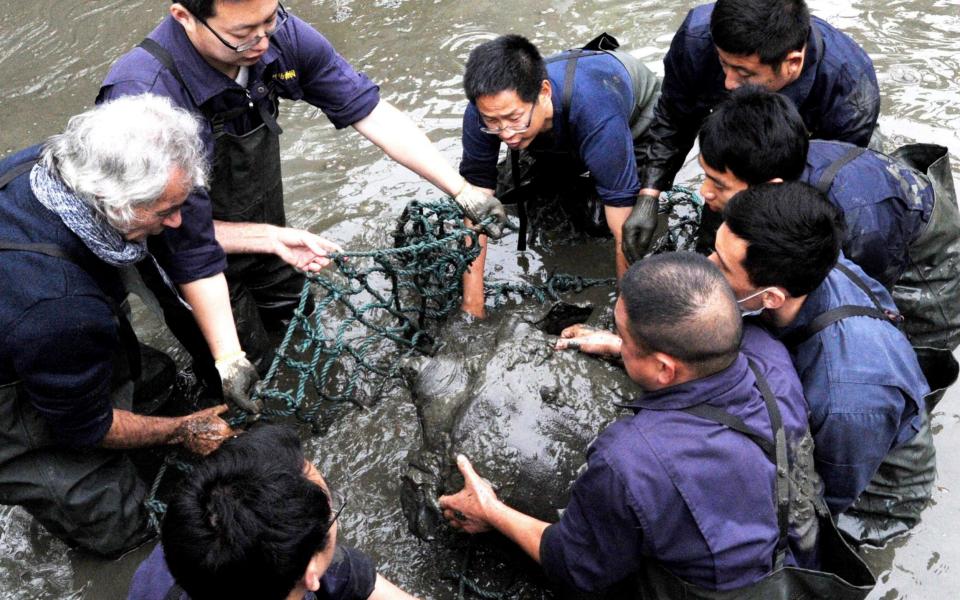World's rarest turtle could avoid extinction after potential mate found in Vietnam lake

A female specimen of the world's rarest turtle has been discovered, meaning the species now has the chance to avoid extinction.
Until this year a male Swinhoe's softshell turtle living at Suzhou Zoo in China was thought to be the last of its kind.
But genetic testing has confirmed that an animal found in Dong Mo Lake in Vietnam in October is a female of the same species - Rafetus swinhoei - which is also known as the Yangtze giant softshell turtle.
Hoang Bich Thuy of the Wildlife Conservation Society in Vietnam said: "In a year full of bad news and sadness across the globe the discovery of this female can offer all some hope that this species will be given another chance to survive."
The species, which is the largest freshwater turtle in the world, was named after the 19th Century English diplomat and biologist Robert Swinhoe.
It later became virtually extinct due to hunting for food, and the sale of its eggs as medicine in China.
Since 2008 scientists at Suzhou Zoo had been trying, unsuccessfully, to breed the last known remaining male with a female.
That female died in April 2019 after an attempt at artificial insemination.

Scientists then began a search for another female in the wild in Vietnam.
In addition to the 86kg female found in Dong Mo Lake on October 22, they believe there may be one more Swinhoe's turtle there, and potentially another in a nearby lake.
They plan an attempt to capture the additional turtles later this year.
Genetic tests will be carried out to confirm the species of the animals, and their gender will be determined.
Timothy McCormack, programme director of the Asian Turtle Program of Indo-Myanmar Conservation, said: "It is so important that we are taking these steps, confirming the sex of the identified animals.
"Once we know the sex of the animals in Vietnam we can make a clear plan on the next steps. Hopefully, we have a male and a female, in which case breeding and recovery of the species becomes a real possibility. We need to be looking at bringing these [turtles] together as part of the broader conservation plan for the species."

